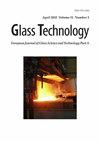基于技术哲学伦理决策发展框架的绿色氢能源转型工程博弈论
IF 0.3
4区 材料科学
Q4 MATERIALS SCIENCE, CERAMICS
Glass Technology-European Journal of Glass Science and Technology Part a
Pub Date : 2023-04-08
DOI:10.47672/ejt.1412
引用次数: 1
摘要
目的:本文旨在解决商业法律问题,并说明道德决策和伊斯兰教法法学方法的可持续发展模型,以解释可再生能源的成文法,并开发一个方程,以展示其经济影响,以及与电力需求服务相关的2050年可再生能源储能容量百分比规划。方法:《汉堡至鹿特丹规则》是与协定下货物运输法有关的商业交易的法律文书。与此同时,法定解释是为了公共福利和安全而制定的立法框架的例证,与宪法法律相协调。电力法规是对有关质量守恒、动量定理和有关商业环境经济学的能量方程的热力学定律进行反思性判断的成文法。研究发现:绿色氢是可再生能源特许权的技术产物。向太阳能转型是一种能源转型形式,通过减少温室气体排放,将碳排放目标降至零水平。可持续发展是商业创新和商品和服务营销的货币框架。但是,这些合同法有明显的限制,因此,可以提出有关技术服务商业交易的环境法的问题。建议:如果绿色经济是2050年的能源转型计划,那么太阳能氢能的相对粘度压力必须发展得符合理想气体定律,与导热系数的欧拉数和洛伦兹数具有相对性,其阻力类似于粘度。本文章由计算机程序翻译,如有差异,请以英文原文为准。
Engineering Game Theory of Green Hydrogen towards Energy Transition using Shariah Jurisprudence Developmental Framework based on Ethical Decision-making from Philosophy of Technology
Purpose: This paper is designed to address problems on commercial laws and illustrate sustainable development modellings of ethical decision-making and shariah jurisprudence method to interpret the statutory laws for renewable energies and develop an equation for exhibition of its economic impacts along with the 2050 planning of storage capacity for renewable power percentage of energy transition in relation to service of electricity demands.
Methodology: Hamburg to Rotterdam Rules are legal instruments of commercial transactions pertaining to transportation laws of goods under agreements. Meanwhile, statutory interpretation serves as an illustration of legislative framework formulated for public welfare and safety, in harmony with constitutional laws. Electricity regulations are statutory laws for reflexive judgement of the laws of thermodynamics pertaining to mass conservation, momentum theorem, and energy equation concerning economics of the business environment.
Findings: Green hydrogen is a technical product of concession for renewable energies. The paradigm shift to solar power is a form of energy transition to target carbon emission towards zero level through reduction of greenhouse gases. Sustainable development is a monetary framework of business innovations and marketing of goods and services. However, there are apparent limitations on these contract laws, hence, issues can be raised concerning environmental laws of business transactions pertaining to technological services.
Recommendation: If green economy is the 2050 plan of energy transition, the pressure relative to viscosity of hydrogen power of solar energy must be developed congruent to Ideal Gas Law, exhibiting relativity to Euler and Lorenz number in connection with thermal conductivity and its resistance akin to viscosity.
求助全文
通过发布文献求助,成功后即可免费获取论文全文。
去求助
来源期刊
CiteScore
0.30
自引率
0.00%
发文量
0
审稿时长
>12 weeks
期刊介绍:
The Journal of the Society of Glass Technology was published between 1917 and 1959. There were four or six issues per year depending on economic circumstances of the Society and the country. Each issue contains Proceedings, Transactions, Abstracts, News and Reviews, and Advertisements, all thesesections were numbered separately. The bound volumes collected these pages into separate sections, dropping the adverts. There is a list of Council members and Officers of the Society and earlier volumes also had lists of personal and company members.
JSGT was divided into Part A Glass Technology and Part B Physics and Chemistry of Glasses in 1960.

 求助内容:
求助内容: 应助结果提醒方式:
应助结果提醒方式:


